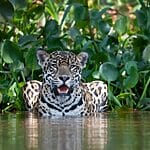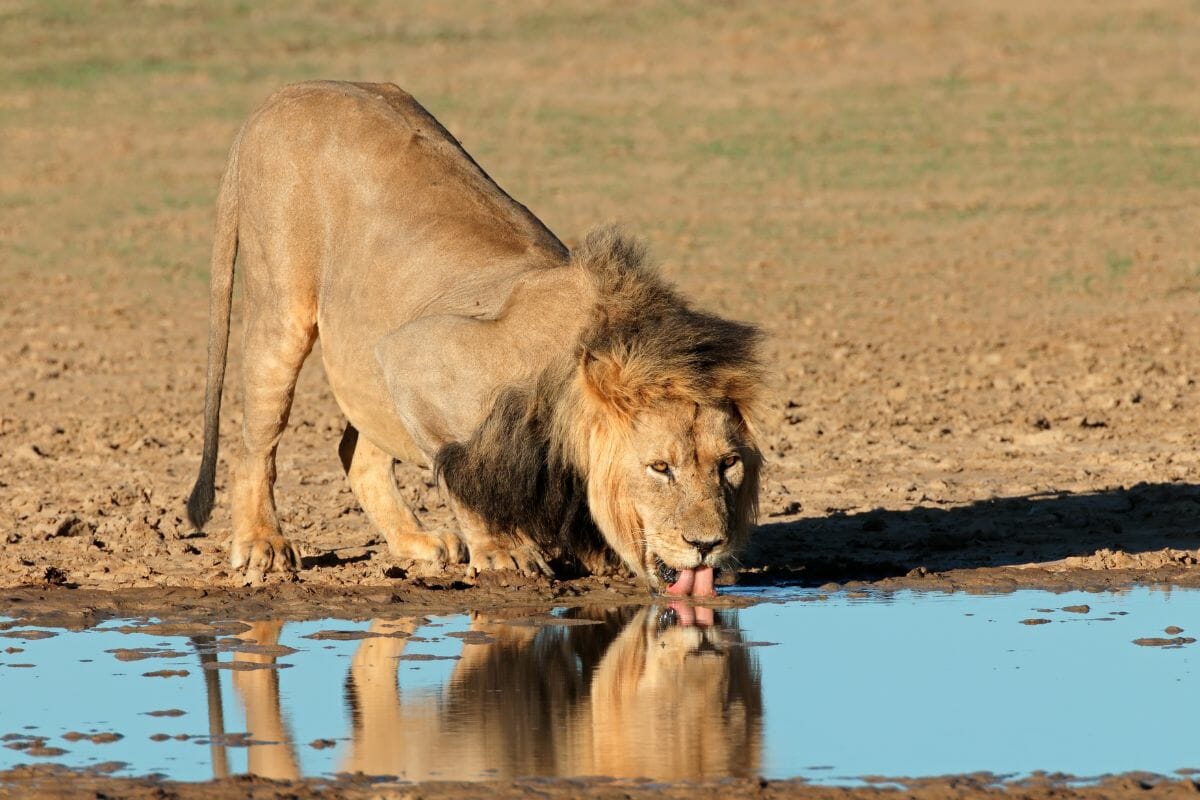Discover the lush landscapes of Costa Rica, where an incredible array of wild animals awaits your discovery. This small Central American nation is a true paradise for nature enthusiasts and wildlife lovers, boasting an astonishing level of biodiversity that sets it apart from many other destinations worldwide.
From vibrant scarlet macaws and playful monkeys to elusive jaguars and fascinating insects, the wild animals in Costa Rica offer visitors the opportunity to witness some of the most captivating creatures on Earth.
Quick Answer: Costa Rica is home to an incredible array of wild animals, including scarlet macaws, toucans, sloths, howler monkeys, jaguars, red-eyed tree frogs, green sea turtles, hummingbirds, blue morpho butterflies, and resplendent quetzals.
Key Takeaways:
- Costa Rica boasts incredible biodiversity, with over 500,000 species representing nearly 4% of all species estimated globally.
- Iconic animals to spot include scarlet macaws, sloths, howler monkeys, jaguars, red-eyed tree frogs, and resplendent quetzals.
- Conservation efforts aim to protect endangered species like green sea turtles and great green macaws while supporting ecotourism.
20 Wild Animals to Spot in Costa Rica
Costa Rica is a true paradise for nature enthusiasts and wildlife lovers, boasting an astonishing level of biodiversity that sets it apart from many other destinations worldwide. This small Central American country is home to an incredible array of wild animals, with over 500,000 species representing nearly 4% of the total species estimated globally.
From vibrant birds and playful monkeys to elusive big cats and fascinating insects, Costa Rica offers visitors the opportunity to witness some of the most captivating creatures on Earth.
1. Scarlet Macaws: Vibrant Feathered Friends

One of the most striking birds you’ll come across in Costa Rica is the scarlet macaw. These magnificent creatures are known for their bright red, yellow, and blue plumage, which makes them stand out in the lush greenery of the tropical forests they call home.
Scarlet macaws are not only beautiful but also highly intelligent and social, often forming strong bonds with their mates for life. These large birds can reach lengths of 81-96 cm and weigh between 900-1500 g.
In the wild, they feast on a diet of fruits, nuts, and seeds, playing a crucial role in the dispersal of seeds throughout the forest.
2. Toucans: Colorful and Charismatic
Toucans are another group of birds that have become synonymous with Costa Rica’s vibrant wildlife. These charismatic creatures are easily recognizable by their large, colorful bills, which can be almost as long as their bodies.
Two of the most commonly spotted species in the country are the keel-billed toucan and the chestnut-mandibled toucan.
Toucans typically measure between 42-65 cm in length and have a diverse diet that includes fruits, insects, and small reptiles. As they move through the forest canopy, toucans play a vital role in seed dispersal, helping to maintain the health and diversity of the ecosystem.
3. Sloths: Slow-Moving Tree-Dwellers
It’s impossible to think of Costa Rica’s wildlife without picturing the adorable and slow-moving sloths. These gentle creatures have captured the hearts of people around the world with their serene expressions and unhurried way of life.
Two main species of sloths can be found in Costa Rica: the brown-throated three-toed sloth and Hoffmann’s two-toed sloth.
Sloths have evolved unique adaptations to thrive in their tree-dwelling lifestyle, including a low metabolic rate that allows them to conserve energy and a special type of algae that grows on their fur, providing camouflage from predators. Their diet consists mainly of leaves, shoots, and fruit, and they play a fascinating role in the forest ecosystem.
4. Howler Monkeys: Loudest Land Animals
Among the most iconic sounds of the Costa Rican rainforest is the haunting call of the howler monkey. These impressive primates are known for their powerful vocalizations, which can be heard up to 5 km away, making them the loudest land animals on Earth.
Howler monkeys have black or brown fur and a prehensile tail that helps them navigate through the tree canopy with ease. T
hey live in social groups called troops, which can consist of up to 20 individuals. As they move through the forest, howler monkeys play a crucial role in seed dispersal, helping to maintain the diversity and resilience of their habitat.
5. White-Faced Capuchin Monkeys: Intelligent and Adaptable
Another primate species that captivates visitors to Costa Rica is the white-faced capuchin monkey. These intelligent and adaptable creatures are easily recognizable by the distinctive white fur around their faces and their long, prehensile tails.
Capuchin monkeys have a complex social structure and are known for their problem-solving abilities, which have been extensively studied by researchers.
As omnivores, they have a diverse diet that includes fruits, insects, small mammals, and even crabs and shellfish in coastal areas. Observing capuchin monkeys in their natural habitat is a fascinating experience that highlights their remarkable intelligence and adaptability.
6. Jaguars: Powerful and Elusive Big Cats
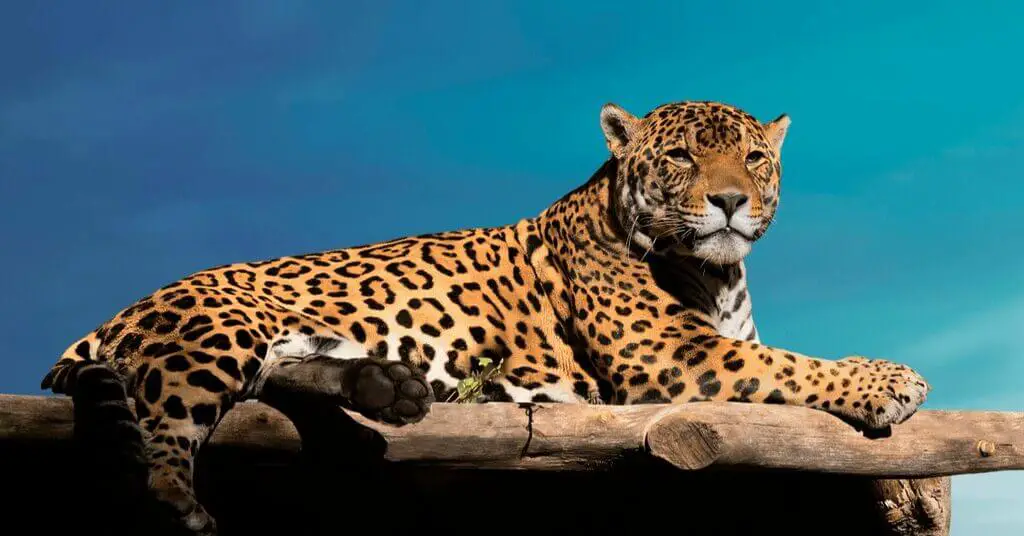
As the largest cats in the Americas, jaguars are a top predator in Costa Rica’s ecosystems. These majestic animals are known for their powerful build, beautiful rosette-patterned fur, and elusive nature. Jaguars prefer dense forest habitats, where they lead solitary lives, occasionally coming together to mate.
As opportunistic hunters, they prey on a wide variety of animals, including deer, peccaries, and tapirs. While spotting a jaguar in the wild is a rare and unforgettable experience, visitors to Costa Rica can learn about the important role these big cats play in maintaining the balance of the ecosystems they inhabit.
7. Red-Eyed Tree Frogs: Iconic Amphibians
One of the most recognizable amphibians in Costa Rica is the red-eyed tree frog. These stunning creatures are known for their vibrant green bodies, bright red eyes, and orange toes, which create a striking contrast against the lush foliage of the rainforest.
Red-eyed tree frogs are nocturnal, meaning they are most active at night when they hunt for insects like crickets and flies.
During the day, they have the remarkable ability to change color, blending in with their surroundings to avoid detection by predators. Spotting a red-eyed tree frog in the wild is a magical experience that showcases the incredible diversity of Costa Rica’s amphibian life.
8. Green Sea Turtles: Ancient Marine Reptiles
Costa Rica’s coastlines are not only renowned for their breathtaking beauty but also for the critical nesting habitat they provide for green sea turtles. These ancient marine reptiles can grow up to 1.5 meters in length and weigh as much as 200 kg, with streamlined bodies that are perfectly adapted for life in the ocean.
Green sea turtles are unique among sea turtles in that they are primarily herbivorous, feeding on seagrasses and algae. Unfortunately, these magnificent creatures face numerous threats, including habitat loss, pollution, and poaching.
Conservation efforts are underway in Costa Rica to protect green sea turtles and ensure that future generations can witness their incredible journey from the sea to the shore.
9. Hummingbirds: Tiny Flying Jewels
Costa Rica is home to an astonishing diversity of hummingbirds, with over 50 species found throughout the country. These tiny, colorful birds are known for their incredible ability to hover in mid-air and fly backwards, a feat made possible by their high metabolism and rapid heartbeat.
Two of the most striking species found in Costa Rica are the violet sabrewing, with its shimmering purple plumage, and the coppery-headed emerald, which boasts a brilliant green body and a distinctive coppery head. As they flit from flower to flower in search of nectar, hummingbirds play a vital role as pollinators, helping to maintain the health and diversity of the ecosystems they inhabit.
10. Blue Morpho Butterflies: Iridescent Beauties
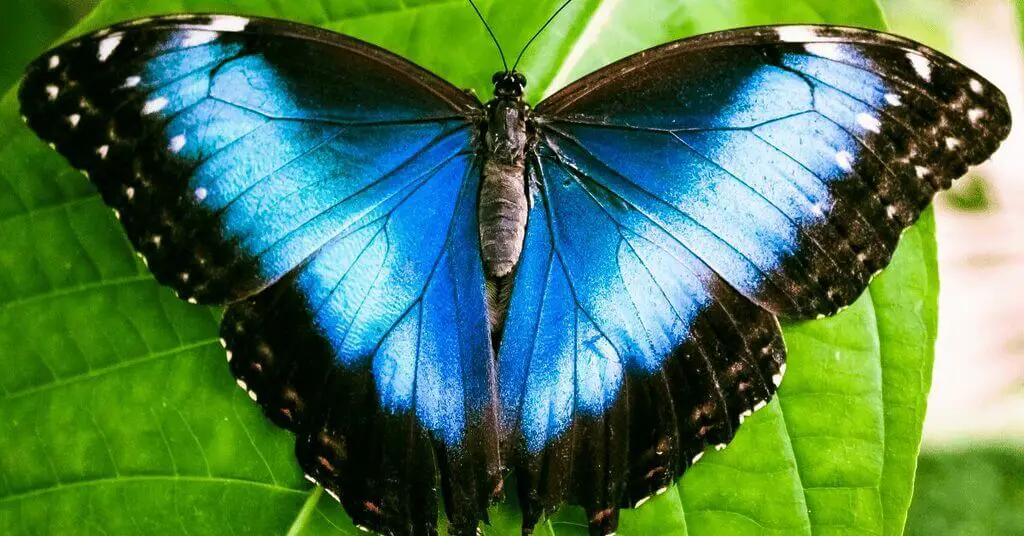
Among the most stunning insects found in Costa Rica are the blue morpho butterflies. These iridescent beauties are known for their large size, with wingspans that can reach up to 20 cm, and their mesmerizing blue color, which seems to shimmer and change as they flutter through the air.
Blue morpho butterflies inhabit the tropical forests of Costa Rica, where they feed on fruit juices and tree sap. When their wings are open, they use their distinctive eyespots to confuse potential predators, while their dull brown undersides provide camouflage when their wings are closed.
Encountering a blue morpho butterfly in the wild is an unforgettable experience that highlights the incredible beauty and complexity of Costa Rica’s insect life.
11. Resplendent Quetzals: Sacred and Spectacular
The resplendent quetzal is often considered the crown jewel of Costa Rica’s avian world, and for good reason. These spectacular birds were revered as sacred by ancient Mesoamerican civilizations, and their beauty continues to captivate people to this day.
Male resplendent quetzals are particularly striking, with vibrant green plumage, a bright red chest, and long, flowing tail feathers that can grow up to a meter in length.
These birds inhabit the misty cloud forests of Costa Rica, where they feed on a diet of fruit, insects, and small reptiles. Resplendent quetzals have become an important symbol of conservation efforts in the country and are a major draw for ecotourism, highlighting the vital connection between protecting wildlife and supporting local communities.
12. Baird’s Tapirs: Prehistoric-Looking Mammals
As the largest native land mammals in Central America, Baird’s tapirs are a fascinating and prehistoric-looking species that capture the imagination of visitors to Costa Rica. These stocky animals can weigh up to 300 kg and are often described as resembling a cross between a pig and an elephant, with their dark brown or grey color and short, flexible snouts.
Baird’s tapirs inhabit the forests and grasslands of Costa Rica, where they feed on a herbivorous diet of leaves, fruits, and aquatic plants. As they move through their habitat, tapirs play an important role in seed dispersal and maintaining the balance of the ecosystems they call home.
13. Ocelots: Small but Mighty Wild Cats
While not as large or well-known as jaguars, ocelots are another wild cat species that calls Costa Rica home. These small but powerful predators are known for their beautiful, spotted fur and their incredible hunting skills.
Ocelots are primarily nocturnal, spending their days resting in the dense foliage of the forest before emerging at night to hunt for prey like rodents, opossums, birds, and reptiles.
As they move through their habitat, ocelots play an important role in controlling populations of small mammals and helping to maintain the balance of the forest ecosystem.
14. Squirrel Monkeys: Energetic and Social
Among the most lively and entertaining primates found in Costa Rica are squirrel monkeys. These small, energetic monkeys are easily recognizable by their distinctive white faces, black muzzles, and orange backs and limbs. Squirrel monkeys are highly social animals, living in troops that can include up to 50 individuals.
As they move through the tropical forest canopy, these monkeys feed on a diet of insects, fruits, and small vertebrates, playing an important role in controlling insect populations and maintaining the health of the ecosystem. Observing squirrel monkeys in the wild is a delightful experience that showcases the playful and social nature of these fascinating primates.
15. Keel-Billed Toucans: Colorful and Iconic
Another iconic bird species that has become synonymous with Costa Rica’s vibrant wildlife is the keel-billed toucan. These striking birds are known for their large, multicolored bills, which can be a stunning combination of green, orange, and blue, as well as their vibrant plumage, with black bodies, yellow chests, and red tail feathers.
Keel-billed toucans inhabit the canopy of Costa Rica’s tropical forests, where they feed on a diet of fruits, insects, and small reptiles. As they move through the forest, these toucans play a vital role in seed dispersal, helping to maintain the diversity and resilience of the ecosystem.
Spotting a keel-billed toucan in the wild is an unforgettable experience that highlights the incredible beauty and complexity of Costa Rica’s avian world.
16. Leaf-Cutter Ants: Industrious Insects
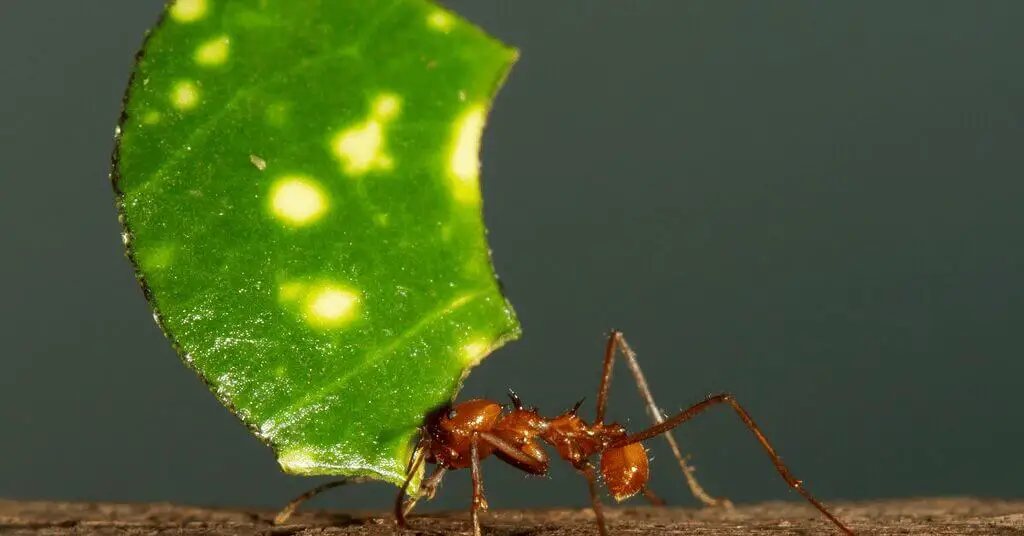
While they may be small in size, leaf-cutter ants are one of the most fascinating and industrious insects found in Costa Rica. These tiny creatures are known for their unique behavior of cutting leaves from trees and carrying them back to their underground nests, where they use the leaves to cultivate fungus gardens that serve as their primary food source.
Leaf-cutter ant colonies are highly organized and can include millions of individuals, each with a specific role to play in maintaining the health and productivity of the colony. As they move through the forest, leaf-cutter ants play an important role in nutrient cycling and soil aeration, helping to maintain the health and diversity of the ecosystem.
17. Eyelash Palm Pit Vipers: Venomous and Well-Camouflaged
Among the most intriguing and well-camouflaged reptiles found in Costa Rica are the eyelash palm pit vipers. These venomous snakes are known for their distinctive appearance, with horn-like scales above their eyes that resemble eyelashes and a highly effective camouflage pattern that allows them to blend in seamlessly with the foliage of the rainforest.
Eyelash palm pit vipers are ambush predators, waiting patiently for prey like small mammals, birds, and lizards to come within striking distance. While these snakes are venomous and should be treated with caution, they play an important role in maintaining the balance of the rainforest ecosystem as predators.
18. Coatis: Curious and Playful Mammals
Another fascinating mammal species that calls Costa Rica home is the coati. These curious and playful animals are known for their long, flexible snouts, dark fur, and banded tails, which they use for balance as they move through the forest. Coatis have a unique social structure, with females and young living together in groups called bands, while males are typically solitary.
As omnivores, coatis feed on a diverse diet that includes fruits, insects, small vertebrates, and even eggs. They play an important role in seed dispersal as they move through the forest, helping to maintain the health and diversity of the ecosystem.
19. Strawberry Poison Dart Frogs: Tiny and Toxic
Among the most striking and brightly colored amphibians found in Costa Rica are the strawberry poison dart frogs. These tiny creatures are known for their vibrant red coloration, which serves as a warning to potential predators of their toxicity.
Strawberry poison dart frogs inhabit the leaf litter of the tropical forest floor, where they feed on a diet of small insects like ants and mites. One of the most fascinating aspects of these frogs’ behavior is their unique parental care, with males carrying tadpoles on their backs to individual water sources, where they can develop and grow in safety.
While these frogs are toxic and should not be handled, they play an important role in the complex web of life that makes up the Costa Rican rainforest.
20. Great Green Macaws: Magnificent but Endangered
The final species on our list of wild animals to spot in Costa Rica is the great green macaw. These magnificent birds are known for their large size, with some individuals reaching lengths of up to 1 meter, and their striking green plumage with blue wing tips and red foreheads.
Great green macaws inhabit the canopy of mature forests, where they feed on a diet of fruits, nuts, and seeds.
Unfortunately, these beautiful birds are classified as endangered due to threats like habitat loss and the illegal pet trade. Conservation efforts are underway in Costa Rica to protect great green macaws and their habitat, with the hope that future generations will have the opportunity to witness these incredible birds thriving in the wild.
Frequently Asked Questions
Are there any venomous snakes in Costa Rica?
Yes, Costa Rica is home to several venomous snake species, including the eyelash palm pit viper and the fer-de-lance. It’s important to exercise caution and avoid disturbing these snakes in their natural habitats.
Can I see sloths in the wild in Costa Rica?
Absolutely! Costa Rica is one of the best places in the world to observe sloths in their natural habitat. Both two-toed and three-toed sloths can be found in the country’s tropical forests.
What is the best time of year to spot wildlife in Costa Rica?
The best time to spot wildlife in Costa Rica is during the dry season, which runs from December to April. During this time, animals are more active and easier to observe due to the lack of heavy rainfall.
Are there any endangered species in Costa Rica?
Yes, several species in Costa Rica are considered endangered, including the great green macaw and the jaguar. Conservation efforts are ongoing to protect these species and their habitats.
What should I do if I encounter wild animals in Costa Rica?
If you encounter wild animals in Costa Rica, it’s essential to maintain a safe distance and avoid disturbing them. Always follow the guidelines provided by your tour guide or the national park you are visiting to ensure both your safety and the well-being of the animals.
- Wild Animals in Costa Rica: A Biodiverse Paradise - 2024-05-16
- Animals That Live in the Rainforest: A Diverse Wonder - 2024-05-15
- Animals in the Safari: A Captivating African Adventure - 2024-05-15


